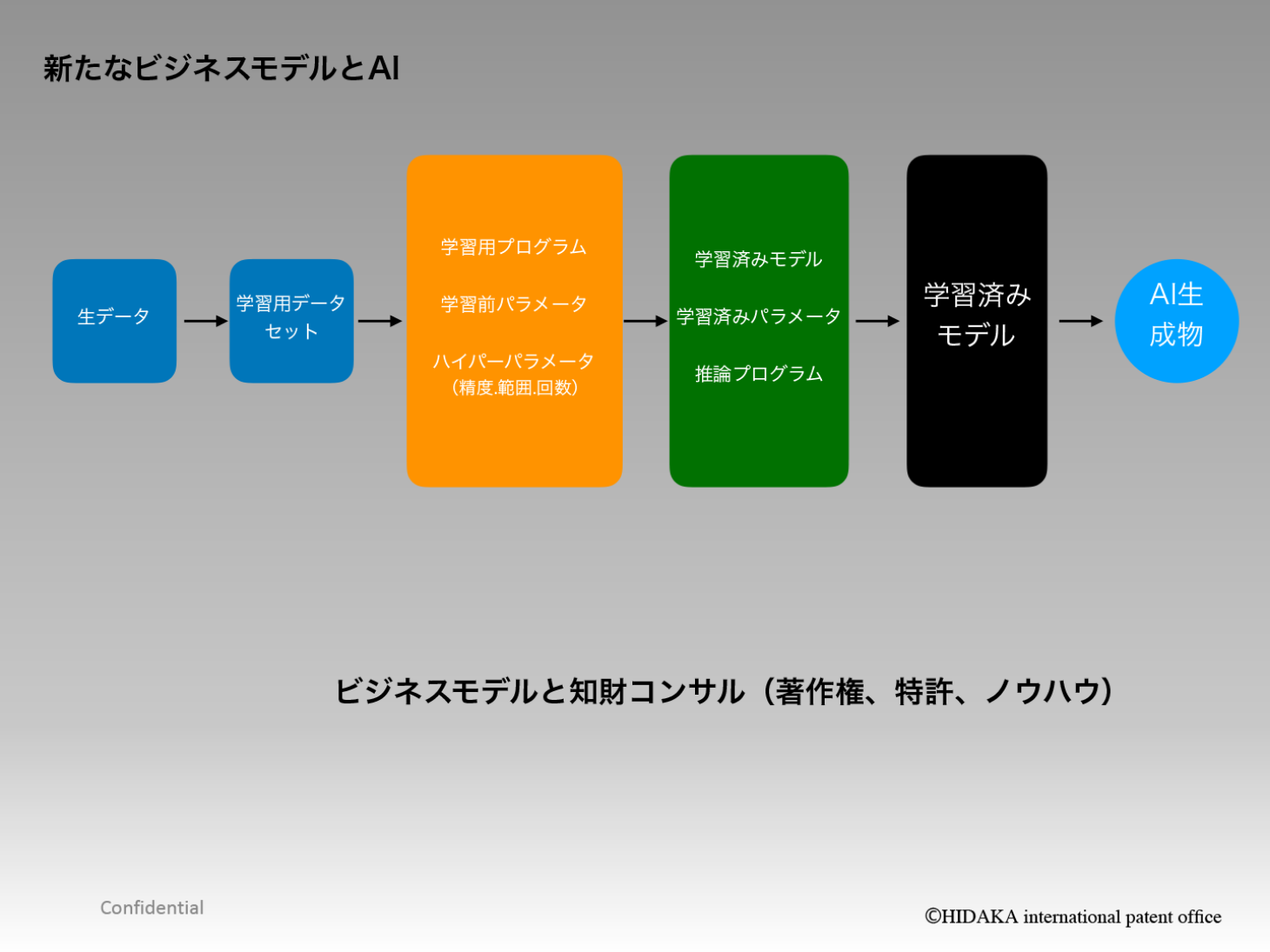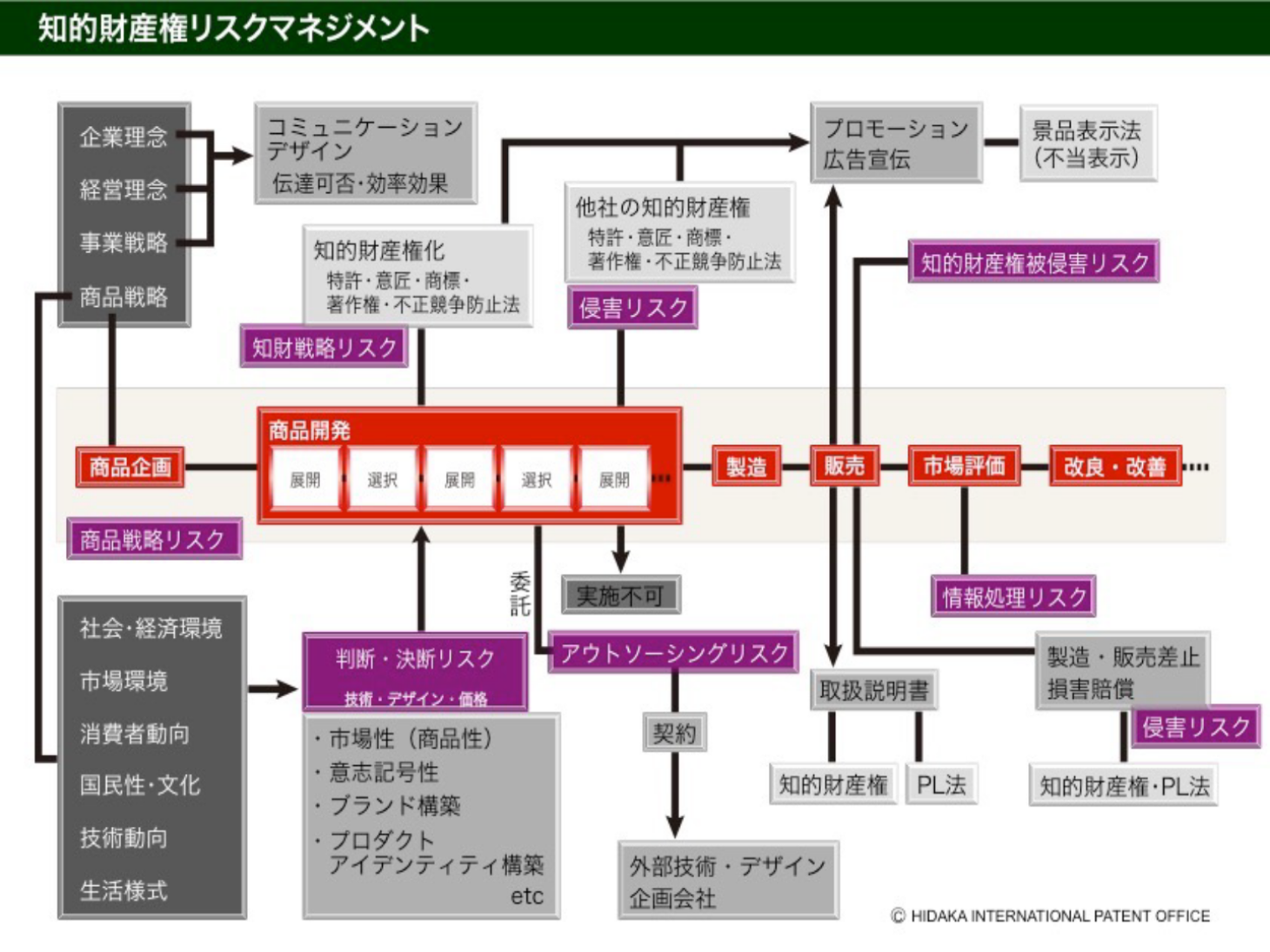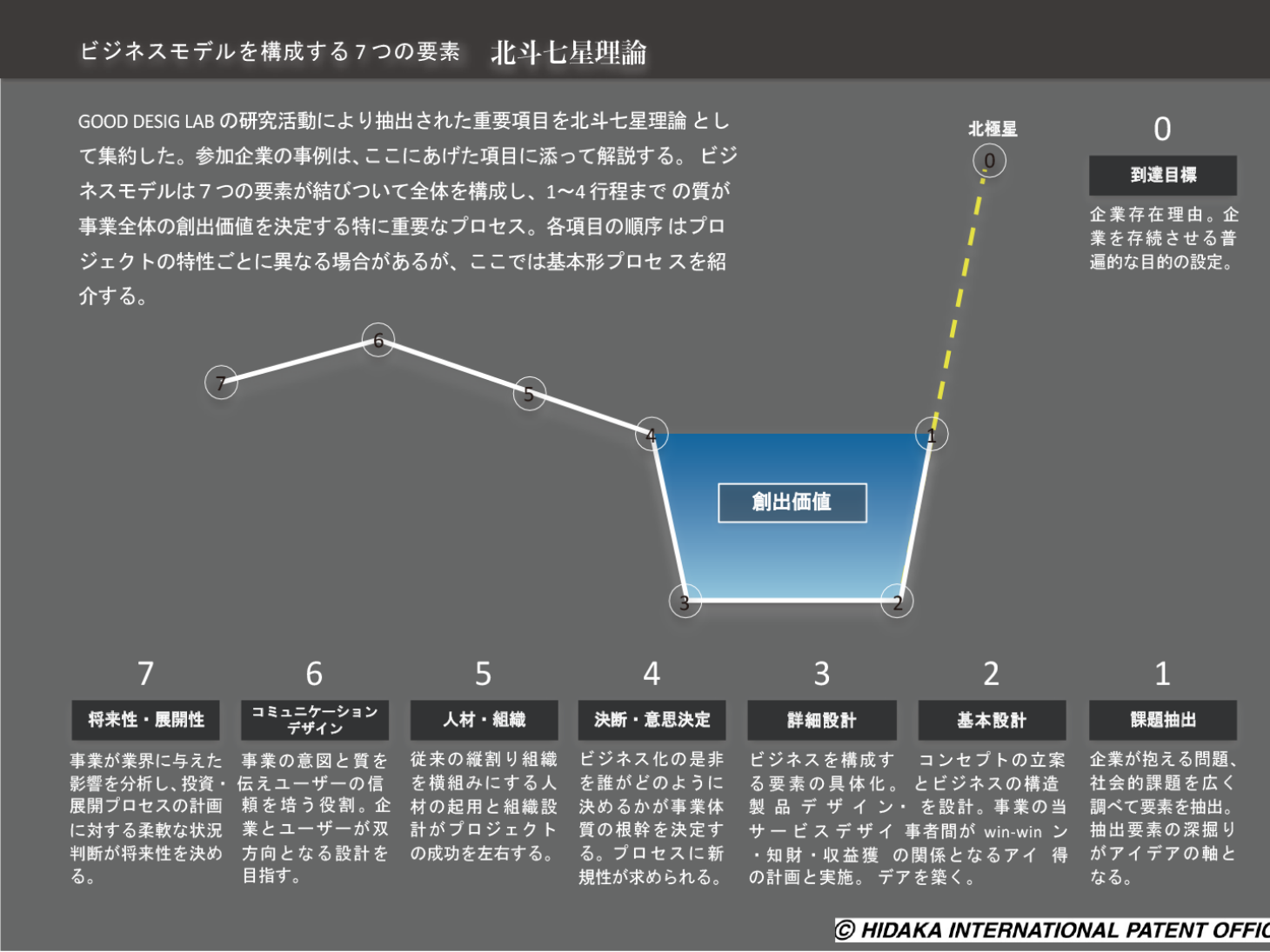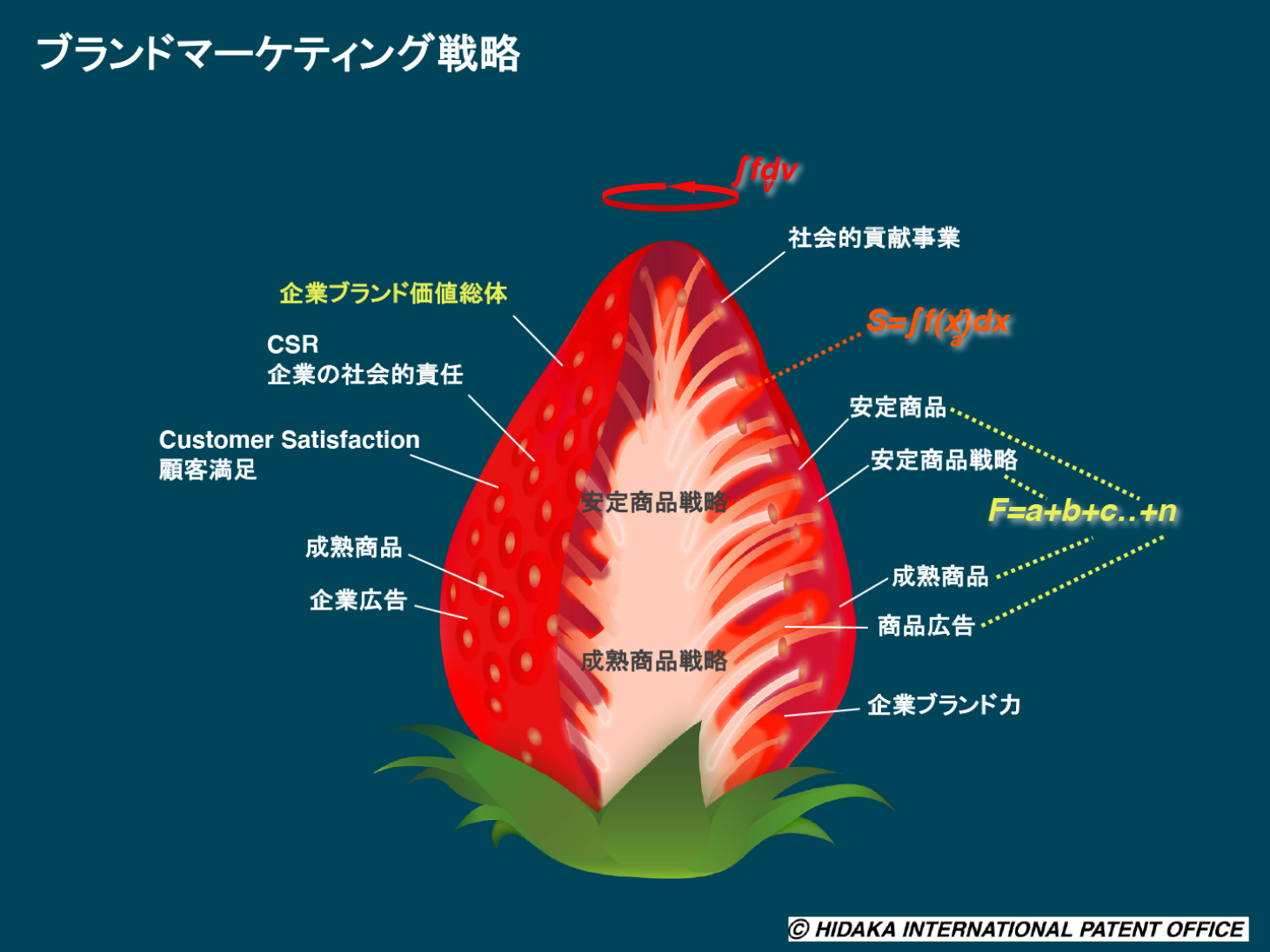
- Hidaka International Patent Office, Director, Patent Attorney, Intellectual Property Litigation Attorney.
- Kyoto Institute of Technology, University Advisor
- Kyoto Institute of Technology, Future Design Engineering Organization, Specially Appointed Professor
- Kanazawa College of Art, Lecturer
- SPATIAL DESIGNERS SUPPORT ORGANIZATION OF JAPAN, Senior Director
- Japan Design Consultant Association, Auditor
- Good Design Award, Fellow
| Area |
Intellectual Property Rights / Intellectual Property Education / Business design / Business design education / Business strategies using intellectual property rights / Risk management / Business and product planning |
|---|---|
| Sites |
Profile
Kanazawa College of Art, Faculty of Arts and Crafts, Department of Industrial Design, Major in Product Design, Graduated.Ministry of International Trade and Industry Technical Officer/Patent Office Examiner; Ministry of International Trade and Industry Deputy Director of General Affairs Division (Design Encouragement Team Leader)
1990: Hidaka International Patent Office established and registered as a patent attorney
2004: Registered as an intellectual property infringement litigation agent.
Provides education in intellectual property rights, business design, and risk management at Kanazawa College of Art, Musashino Martial Arts University, Tokyo Metropolitan University, Tokyo University of Science Graduate School, Tokyo University of the Arts Graduate School, Kyushu University Graduate School, Shibaura Institute of Technology, Kyoto Institute of Technology Graduate School, etc.
Members of study groups of public organizations such as the Design Policy Study Group and the Design Industry-Academia Collaboration Contract Study Group, directors of Kyoto Institute of Technology, and Good Design Jury Member.
Currently an Kyoto Institute of Technology Advisor and Specially Appointed Professor, Kanazawa College of Art. Lecturer, and a judge for the Tokyo Business Design Award and the Next Generation Business Creation Design Support Project.
Portfolio
Considering the role of Design Consultants from the perspective of IP and design experts
The role and importance of intellectual property(IP) varies depending on various factors, such as the business (product and service) strategy in line with the company’s management policy and its position in the industry.
In order to build effective IP for a company, it is necessary to analyze the product or service field in detail, make a decision after determining the desired direction and future potential, share that information within the company, and design a specific business development process.
IP is an important support tool for realizing a company’s objectives, but if the company’s intentions and strategy are not clear, it is impossible to draw up an IP strategy. In other words, while IP is an indispensable support tool for achieving objectives, if the business strategy is not firmly established, the vulnerability of the IP will be revealed later. Therefore, the process of deciding on a business strategy is extremely important, and it is essential to collect and organize a wide range of knowledge both inside and outside the company, share information, and make accurate management decisions.
As an expert in design and IP, I often come across cases where the business strategy is unclear or has not been decided in the first place when I interview companies. As a result, it is not rare that the review of the product strategy itself is led to the review of the business strategy itself through the consideration of the IP strategy. In these cases, the role of a design consultant is to use their specialized knowledge and experience to consolidate information from the perspective of human and social values, and then reorganize it as a communication tool to provide information for product strategy decisions. Furthermore, in cases like mine where I specialize in both design and IP, I can make suggestions regarding the direction of business strategy and implement an IP strategy in line with that.
Design consultants not only fulfill these basic design functions, but also demonstrate characteristics that correspond to their field of design expertise.
In today’s world, where social conditions and technology are changing dramatically, design consultants are expected to have broad insight and be able to coordinate specialized elements from various fields while summarizing information from the perspective of human and social values, share it with stakeholders, and put it into practice.


Business Design
In today’s rapidly changing landscape of society, technology, and economy, companies and regions are reaching a critical turning point where they must reassess their traditional purpose and value, and instead create and reconstruct new ones. In other words, it is necessary to discover a new direction to ensure the sustainable management and survival of businesses and communities.
As a solution to this important challenge, we have studied “”Business Design,”” which is a method of creating and reconstructing new purposes and values based on design thinking—an approach that originates from human and social values. Through case studies, we have derived key components that form the core of this method. This is known as the “”Big Dipper Theory”” for successfully implementing Business Design.
In Business Design, the stages from problem identification to basic design, detailed design, and decision-making are essential processes that determine the overall value created by the business. Additionally, “”Human Resources & Organization,”” “”Communication Design,”” and “”Future Potential & Scalability”” are indispensable elements to maximize this created value. Together, they foster business continuity and consistency, enhancing the chances of successful branding. Below is a brief explanation of the key components of this theory.
Key Components of the Big Dipper Theory
0. Final Goal
Based on management assets such as technology, sales capabilities, know-how, and human resources, the company defines its future reason for existence and survival objectives. A similar approach is applied in regional management as well.
1. Problem Identification
Problems faced by the company and future societal challenges are analyzed to extract elements that serve as development guidelines. Deep exploration of these elements forms the foundation and axis of idea generation.
2. Basic Design
This stage involves formulating the concept and designing the business structure. If multiple stakeholders are involved in the project, the methods and areas of collaboration are defined to create mutually beneficial relationships.
3. Detailed Design
This involves concretizing the elements of the business, including process design for products and services, technology development, detailed design proposals, intellectual property strategies, and revenue models. These details are compiled into a business plan and shared with relevant departments and participating companies. It is also essential to ensure flexibility so the business can adapt to market reactions post-launch.
4. Decision-Making
This is the phase where the business’s viability is evaluated. Who makes the decision, and from what perspective, determines the fundamental nature of the business. Investing in uncertain, risky ventures is a key decision that management must make with the final goal in mind. In organizations where decision-making communication flows smoothly, the flexibility built into the detailed design can be fully leveraged.
5. Human Resources & Organization
Move away from traditional siloed structures and trial cross-functional project teams composed of the necessary personnel. The goal is to eventually implement efficient organizational restructuring and normalize project-based structures. Bringing in external talent and building corporate networks also increases the likelihood of business success.
6. Communication Design
Plays a key role in conveying the intent and quality of the business, building trust with users and other stakeholders. It is especially important to design systems that enable two-way communication between companies and users.
7. Future Potential & Scalability
Analyze the impact the business has had on the company and industry, and make flexible judgments regarding future investment and expansion planning. Accurate analysis and adaptive decision-making determine the long-term viability of the business.




